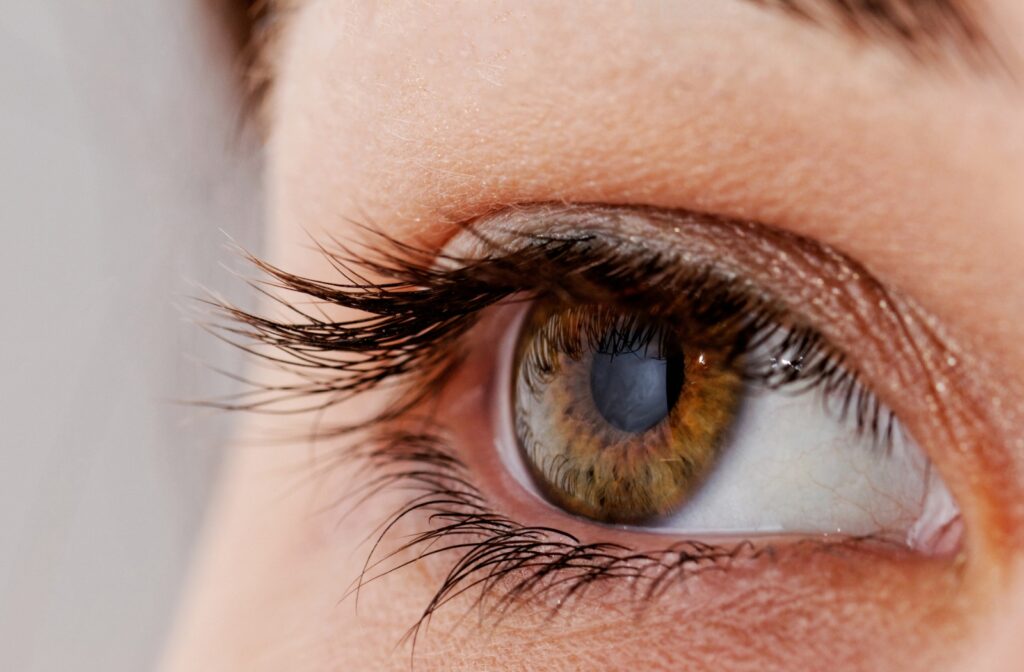At One Vision Eye Care, we are committed to bringing our patients new diagnostic and treatment technologies in vision science and eye health. One of the innovative treatments we proudly offer in our clinic is photobiomodulation (PBM)—also known as red or near-infrared light therapy. Research over the past decade has shown that carefully delivered wavelengths of light can help manage conditions such as childhood myopia (nearsightedness), age-related macular degeneration (AMD), and even improve aspects of vision in otherwise healthy, aging eyes.
What Is Photobiomodulation?
Photobiomodulation uses safe, non-thermal red and near-infrared light (typically between 600–1000 nm) to stimulate the retina (the light-sensitive tissue that lines the inside of your eye) at a cellular level. By enhancing mitochondrial function and improving blood flow, PBM reduces oxidative stress and supports healthier retinal tissue.
Red Light Therapy for Myopia in Children
Childhood myopia is increasing worldwide. In recent years, several large clinical trials have found that repeated low-level red light therapy (RLRL) can slow both axial eye growth and refractive progression.
• In one multicenter randomized controlled trial, children receiving daily PBM therapy experienced significantly slower myopia progression and axial elongation compared to those wearing standard single-vision glasses.
• Follow-up studies show that these benefits are maintained during treatment, though there may be a modest rebound effect if therapy is stopped abruptly.
• Combining PBM with other myopia control strategies, such MiYOSMART lenses, may offer even stronger protection against rapid progression.
Safety data so far is encouraging, though careful monitoring and use of regulated devices under optometrist supervision is essential.
Photobiomodulation for Macular Degeneration
For patients with intermediate dry AMD, PBM has also shown promising results. Clinical trials, including the LIGHTSITE II and III studies, reported:
• Improvements in visual function and contrast sensitivity after structured courses of PBM treatment.
• Potential stabilization of retinal changes linked to AMD progression.
While not a cure, PBM represents an exciting adjunct therapy that may help preserve the quality of life for patients facing vision loss from macular degeneration.
Enhancing Vision in Aging Eyes
Research has also looked at the impact of PBM on otherwise healthy eyes. Studies from University College London demonstrated that just three minutes of 670 nm red light exposure in the morning improved color contrast sensitivity and rod function for up to a week in adults over 40.
This suggests that red light therapy may support healthier vision and retinal function as we age, even outside of diagnosed disease.
Safety and Clinical Guidance
• Professional oversight — all light-based therapies should be conducted under the guidance of an optometrist or ophthalmologist.
• Regulated devices only — consumer gadgets may not deliver safe or effective dosing.
• Long-term planning — especially for children with myopia, treatment decisions should consider rebound effects and ongoing care.
The Future of Eye Care
Photobiomodulation represents a new frontier in vision science. With growing evidence across multiple conditions, it has the potential to become a powerful addition to personalized eye care.
At One Vision Eye Care, we stay at the forefront of research and technology to ensure our patients receive the most effective and evidence-based treatments.
Take the Next Step
At One Vision Eye Care, we proudly offer red light therapy (photobiomodulation) as part of our advanced vision care services. Whether you are exploring options for your child’s myopia, seeking supportive care for macular degeneration, or simply looking to protect and optimize your vision as you age, we can help.
Call us today or book an appointment online to learn more about how red light therapy can benefit your family’s eye health.




